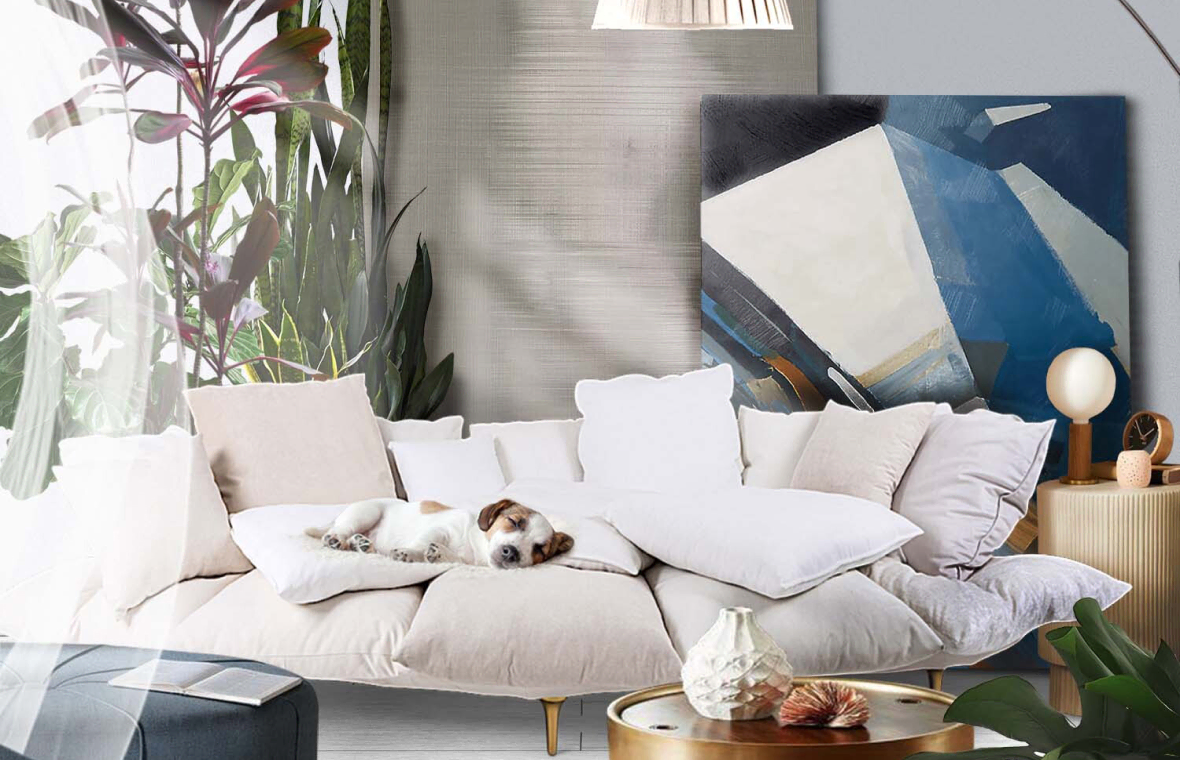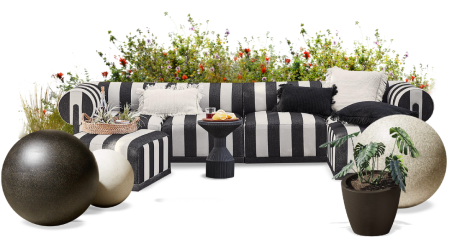Home Design Tip: How to Choose the Right Rug for Your Space
 by DecorMatters|May 13, 2019
by DecorMatters|May 13, 2019A rug easily draws a room together, but choosing the right rug for your space is one of the more difficult tasks when it comes to home design and there's a good reason for that. A rug is an important detail because it completes a room and ties it together, brings warmth and comfort to a space, and adds artistic value to a room’s design. Nonetheless, choosing the right rug may sound like a tedious task when you’re faced with an infinite range of colors, shapes, patterns, materials, and sizes. We’re here to provide home design tips to guide you through factors you should consider before you tackle choosing the right rug for your space.

Consider the Layout of the Room
The first thing to consider before you choose the right rug is the layout of the room, where the furniture sits, and how much space it takes up. The rug you choose will help develop a sense of cohesion throughout spaces in your home design, so it’s vital to consider the placement of your furniture and the goal of your rug. Typically, at least the front legs of the furniture in your space should be resting on the rug. In larger areas, such as a living room, a good rule to follow is to choose a rug that’s large enough for all your furniture to sit entirely on top of, leaving wiggle room in between and at least a foot of extra rug space around the edge of the furniture pieces. A smaller rug, though not usually recommended, that floats in the center of the furniture arrangements can be effective if styled well for those looking for a budget-friendly option.

Choose a Shape and Size
After analyzing the layout of your space and deciding where you want your rug to rest, the most critical task that interior designers consistently suggest is to measure, measure, and measure again! The rug is an essential home design element, but becomes an ineffective piece if not fitted well to a room. When it comes to choosing a rug, bigger is better as generally, a rug that is too small will make your room look smaller. A rug that is proportional to the space will help establish a sense of balance throughout a room.

A dining room rug is a resourceful tactic to protect your flooring from the constant sliding in and out of chairs while adding a design element to your space. You can also play around with shapes and choose to match or contrast the shape of your table with the shape of the rug. The key component is that whichever shape you choose, it’s important to have the rug extend at least 24 inches beyond the chairs to provide sufficient space for people moving in and out from the dining area. There’s also room for rugs to make a statement in the kitchen. Two simple ways to incorporate rugs in the kitchen include adding a runner that is parallel to the length of your kitchen cabinets or island or placing a small rug or runner in front of the sink area to rest your feet.

Coordinate Colors and Your Style
A rug can fill a significant amount of space in a room and with the ability to make a big impact, it’s crucial to choose a rug with colors or patterns that will nicely blend with everything in the room. If you collected items of furniture and decor before choosing a rug, it’s important to stay true to your style and choose the right rug that will be beneficial in continuing the cohesiveness with the rest of the room. If your style is calling for more than one type of rug, layering is a great option to add different textures, height, colors, and patterns to a space. A helpful home design tip is to choose a rug first when starting a new project and to design the room around the rug as a central piece of the space because you may find yourself searching for the right one for months if everything else in the room was chosen prior to the rug.

Be Mindful of the Material
It is necessary to be mindful of the material of the rug you choose if you want your rug to be a worthwhile investment. This will require you to evaluate the room it’s going to be placed in and the primary function of the rug in that specific area before purchasing. Although it’s important to choose a material that feels great underfoot, the main factor that highly influences your decision is the amount of heavy foot traffic the rug will endure in your household. Heavy traffic areas, such as hallways and kitchens, would do best with rugs that can withstand stains, spills, and a lot of footwork. A flat-weave or low-pile rug with a smoother surface that won’t snag or pull will have the durability to handle these more common areas and are easy to spot clean. You should also consider choosing a rug with a slightly darker color or pattern that will make footprints and stains less obvious in between cleaning.
When it comes to home design, living rooms and bedrooms are a couple of the favorable places to design for relaxation and comfort in your home. Therefore, medium to high-pile rugs are the way to go to deliver a cozy feeling into these rooms. The only downside to these thicker rugs is that dirt and debris catch on to the fibers a lot easier compared to low-pile rugs. High-pile rugs require a bit more maintenance and care to keep clean, including being shaken out once a year to remove allergens and dirt.
A home design tip that you may find extremely helpful to choose the right rug for your space is to visualize the placement and size of the rug to get a sense of the final look before beginning your search by using painter’s tape, newspapers, or a bed sheet to mock rug placements in a room. After deciding where a rug will make an impact in a room, you can then use the free DecorMatters app to shop rugs and adjust the placement and size to your preference to see how it meshes with all your furniture before you invest in a rug.















 1d left
1d left




